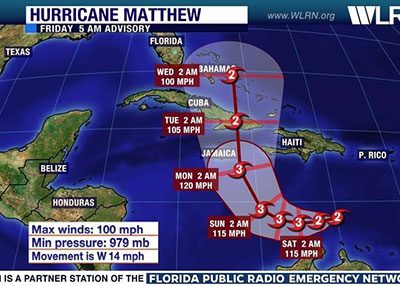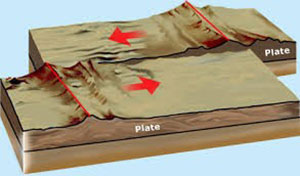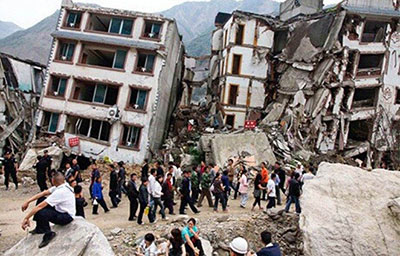The United Nations’ (UN) International Day for Natural Disaster Reduction is observed  annually on the second Wednesday of October. As such, it will be celebrated on October 12, this year. Since the beginning of its observance back in 1990, it has always been a day to encourage people and governments to participate in building more resilient communities and nations. It also encourages and promotes a global culture of natural disaster risk reduction.
annually on the second Wednesday of October. As such, it will be celebrated on October 12, this year. Since the beginning of its observance back in 1990, it has always been a day to encourage people and governments to participate in building more resilient communities and nations. It also encourages and promotes a global culture of natural disaster risk reduction.
Natural Disaster, People and the Environment
The Caribbean Region is prone to earthquakes and hurricanes because of its geographic location. Just a few days ago we saw Hurricane Matthew impacting on some of our sister CARICOM nations Haiti, Jamaica, Cuba and Bahamas leaving devastation in its wake. Matthew is the most powerful storm in the Caribbean since Felix hit in 2007.
Just five years ago, on Jan. 12, 2010, a devastating earthquake with a magnitude of 7.0 struck Haiti, killing more than 160,000 and displacing close to 1.5 million people. Five years later, scars of the tragedy remain in Port-au-Prince, and the nation is still struggling to recover.
Many might ask why the Caribbean region is so prone to these devastating disasters. In the case of earthquakes, the Caribbean islands tare situated within the vicinity of two tectonic plates: the North American plate and the Caribbean plate. These two plates are constantly moving in a side-by-side rubbing action on  the jagged edges of each other. Sometimes the edges of these two plates become stuck. When this happens, the rest of the block is still moving, and the energy that would normally cause the blocks to slide past one another is being stored up. When the force of the moving blocks finally overcomes the friction of the jagged edges and gets unstuck, all the stored up energy is released. The energy radiates outward from the fault in all directions – like ripples on a pond – in the form of seismic waves. The seismic waves cause the Earth to shake as they travel through it, and when the waves reach the Earth’s surface, they shake the ground and anything on it.
the jagged edges of each other. Sometimes the edges of these two plates become stuck. When this happens, the rest of the block is still moving, and the energy that would normally cause the blocks to slide past one another is being stored up. When the force of the moving blocks finally overcomes the friction of the jagged edges and gets unstuck, all the stored up energy is released. The energy radiates outward from the fault in all directions – like ripples on a pond – in the form of seismic waves. The seismic waves cause the Earth to shake as they travel through it, and when the waves reach the Earth’s surface, they shake the ground and anything on it.
Hurricanes as we know, are totally different phenomena. The North Atlantic region, within which the Caribbean is situated, is prone to hurricanes every year. Hurricane season is  usually between June and November. Because of the conditions necessary for the formation of Hurricanes existing in the tropics; warm tropical waters (80°F and more), moist air and wind, the region is the perfect place. These conditions fuel the strength and intensity of the hurricane, causing it to wreak havoc to anything in its path.
usually between June and November. Because of the conditions necessary for the formation of Hurricanes existing in the tropics; warm tropical waters (80°F and more), moist air and wind, the region is the perfect place. These conditions fuel the strength and intensity of the hurricane, causing it to wreak havoc to anything in its path.
Impacts
Natural disasters, depending on their magnitude, vary in impact on people and the environment. Among the effects of natural disasters are destruction to Wildlife and their habitat. These species and their habitat play important roles e.g. preventing soil erosion; aiding in water purification and providing medicine, food and shelter. Such loss creates and further compound the problems which can see human’s livelihoods being affected. Further there is economic damage to countries due to landslides, heavy flooding, healthy impacts and the enormous cleanup costs. Many people in the region and around the world have lost their lives, homes or access to essential facilities, such as hospitals, due to natural disasters.Farm lands are destroy and fisher folks are affected. Water quality supply is often affected as well and electricity supply and transportation networks are shutdown, causing a standstill in the country during these events.
Risk Reduction and Mechanisms
According to the United Nation Development Programme (UNDP), in 2011 alone, almost 30,000 people were killed in 302 disasters, and 206 million people were affected. Beyond the toll on human life, the costs of disasters were estimated at more than US$ 2 trillion over the last two decades. Earthquakes and violent weather-related catastrophes helped make 2011 the costliest year ever for response and recovery from disaster. Disaster risk reduction is the concept and practice of reducing disaster risks through systematic efforts to analyse and reduce the causal factors of disasters. Having National and Regional Risk Reduction management plans, programmes and policies in place is important since it helps to reduce human and wildlife exposure to hazards and lessening vulnerability of people and property. This will take into consideration and focus attention and efforts not just reduction but prevention, mitigation and preparedness.
The Civil Defence Commission (CDC) has a leading role to play in promoting Comprehensive Disaster Management in Guyana. Presently it utilizes a core of volunteers from the various administrative regions who are trained in different areas of disaster preparedness. EPA has a representative on the Board of the CDC which seeks to identify potential risks and eliminate or minimize those risks.
CDEMA
The Caribbean Disaster Emergency Management Agency (CDEMA) is a regional inter-governmental agency for disaster management in the Caribbean Community (CARICOM). Its predecessor CDERA (Caribbean Disaster Emergency Response Agency) had responsibility for the coordination of emergency response and relief efforts to Participating States that require such assistance. It transitioned to CDEMA in 2009 to fully embrace the principles and practice of Comprehensive Disaster Management (CDM). (CDM) is an integrated and proactive approach to disaster management and seeks to reduce the risk and loss associated with natural and technological hazards and the effects of climate change to enhance regional sustainable development.
Fortunately with the exception of the 2005 floods, Guyana has not been face with severe natural disasters. It is still important however, that we are aware of these occurrences and render support to others affected, whether moral or material should this be required. While for Guyana, the risk of major disasters such as hurricanes, earthquakes, landslides etc., is low, we still remain an extremely vulnerable country. With 90% of our population and most of our agriculture and administrative activities taking place on a narrow coastal belt our risk to sea-level rise remain high.
You can share your ideas and questions by sending letters to: “Our Earth, Our Environment”, C/O EIT Division, Environmental Protection Agency, Ganges Street, Sophia, GEORGETOWN; or email us at eit.epaguyana@gmail.com.



.jpg)








